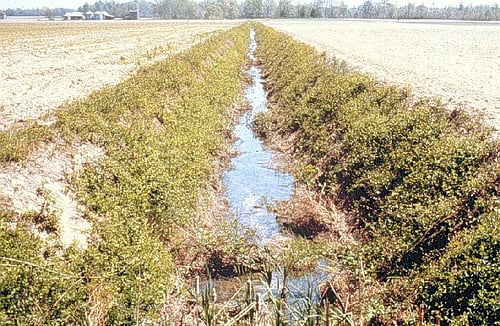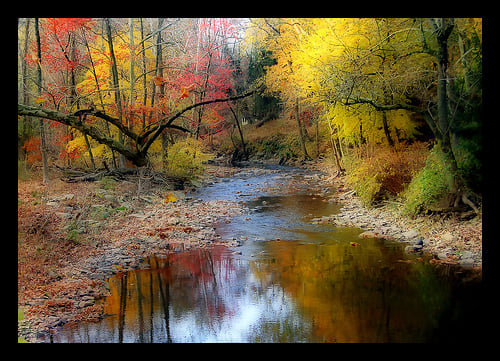Riparian Buffer Zones
If you are fortunate enough to have a stream running along or across your property, it is important to educate yourself about the basics of riparian management.
The Benefits of Riparian Buffer Zones
Maintaining a healthy riparian buffer zone provides many benefits to you and the environment. Well designed riparian buffers protect the water quality of the stream by absorbing sediment and pollutants. In fact, riparian buffers can absorb 60% or more of nitrogen and phosphorus pollutants commonly found in runoff from agricultural fields.
Riparian buffers zones also improve wildlife habitat by providing food, shelter, and travel corridors for many species, including deer, game birds and more. Streamside trees and other vegetation provide shade, cooling the water and improving habitat for fish, amphibians, and other aquatic and semi-aquatic animals.
Many plants that provide food and shelter for wildlife also offer economic benefits for humans, such as fruit, nuts, and lumber, as well as aesthetic appeal. Carefully managed grazing can also be added in some riparian zones.

Designing a Riparian Buffer
The ideal width of a riparian zone depends on its function. The width of riparian zones is measure in one direction, starting from the edge of the water.
If you are interested primarily in preventing erosion, a 50 foot riparian zone is probably adequate. This is wide enough for most sediments to be trapped and absorbed.
In order to remove pesticides, fertilizers, and other chemical pollutants, a minimim of 66 feet is required.
Most experts put the ideal width of a riparian buffer zone for maximum stream health and water quality at 100-150 feet.
If you are interested in providing a corridor for wildlife habitat, a 300 foot buffer is recommended.
Local conditions also affect the ideal width of riparian buffers. For example, especially steep streambanks may reuire wider buffer zones than shallower ones in order to reduce erosion and runoff problems.
Within the total width of a riparian buffer zone are three distinct zones. The width can be changed by increasing the width devoted to any one of these three zones.
The first zone is streamside. Zone 1 should include a minimum of about 30 feet of large trees (4-5 rows), as well as dense plantings of native shrubs and ground covers to stabilize the stream banks themselves. (Contrary to popular belief, grass does not effectively stabilize stream banks.) The first row or two of trees should be fast growing, wet tolerent trees such as cottonwoods or willow, which will quickly shade and stabilize the stream banks. Outer layers can be slower growing hardwoods such as oaks, walnuts, hickories, and other good nut and lumber producing trees.
The second zone should consist of a much narrower (at least 12 feet) strip of shrubs and small trees. Native flowering or fruit-producing shrubs and trees such as dogwood, chokecherry, and wild plum are good choices.
Zones 1 and 2 are particularly important for flood control and wildlife habitat.
Zone 3 should consist of at least 20-25 feet of unmowed native warm season grasses and perennials. Switchgrass is an especially good choice in many areas of the United States. This strip is actually the most important for preventing erosion and water pollution. The majority of sediments and pollutants are absorbed here before they even reach zones 1 and 2.
Economic Incentives
The United States Conservation Reserve Program provides financial and technical assistance to farmers and ranchers interested in creating riparian buffer zones adjacent to streams on their property.

Learn More
To learn more about designing a riparian buffer zone suitable for your area, contact your state extension office.
Iowa and Connecticut have especially helpful information:
- Buffer Strip Design, Establishment, and Maintenance
From the Iowa State University Extension - Riparian Buffers for the Connecticut River Basin
A series by the Connecticut River Joint Commissions - Protecting Riparian Areas: Farmland Management Strategies
This publication is designed to help farmers, watershed managers, and environmentalists understand what healthy riparian areas look like, how they operate, and why they are important for the environment and society.



